SomnusNooze
Happy Holidays! Celebrations may look different this year, so however you plan to enjoy the season, we wish you peace and joy! If you’ve missed any of the latest news we’ve shared via social media, don’t worry! Get up to date with this latest edition of “In Case You Missed It!”
- DOUBLE YOUR DONATION BY DEC. 31: Bertha and Tony Rye will generously match up to $12,000 in donations made to the Hypersomnia Foundation!
- MUST WATCH: Two newly released videos on living with IH from a patient’s perspective.
- CLINICAL TRIAL UPDATE: Jazz Pharma shares positive top-line results from the phase 3 study of Xywav®.
- INTERESTING READ: Service dogs and their promising roles in sleep disorders therapy.
- DID YOU KNOW?: Share IH facts and information with others.
- SHOP AND SUPPORT: AmazonSmile will support HF with every purchase you make.
Happy Holidays and don’t worry if you’ve missed anything. We’ve got you covered!
DOUBLE YOUR DONATION BY DECEMBER 31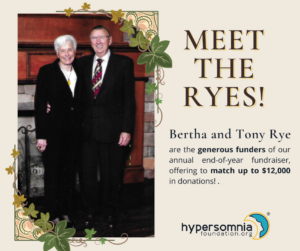
Meet the Ryes! Bertha and Tony Rye are the generous funders of our annual end-of-year fundraiser, and this year have offered to match up to $12,000 in donations.
For the Ryes, supporting the mission of the Hypersomnia Foundation is personal. They understand the challenges facing people with IH and related sleep disorders.Their daughter-in-law, Cat Page-Rye, was one of the three co-founders of the Hypersomnia Foundation, and served on the HF Board for many years. And their son, Dr. David Rye, is a pioneer in the field of IH research at Emory University.
Thank you, Mr. and Mrs. Rye—and many thanks to YOU, our community, for helping us achieve that match and raise $24,000!
Your donation of any amount is greatly appreciated and supports our mission to improve the lives of people with idiopathic hypersomnia & related sleep disorders. Please make a donation and support HF today!
NEWLY RELEASED VIDEOS!
HF is proud to release two videos on living with IH from a patient’s perspective.
 Michelle Emrich, MD – “A Doctor’s Once Agile Brain Broken by IH”
Michelle Emrich, MD – “A Doctor’s Once Agile Brain Broken by IH”
Michelle Emrich is an internal medicine physician whose beloved career was cut short when she was 32 years old by the onset of severe, treatment-refractory idiopathic hypersomnia. In this video, she describes how IH broke her formerly agile brain, leading to unrelenting and painfully intense sleepiness, severe brain fog with associated cognitive dysfunction, and the need for multiple daily obligatory daytime sleep sessions. Michelle describes the huge impact of IH on every aspect of her life and the great importance of therapy and supportive healthcare providers. She hopes that sharing her story will help foster better understanding of this invisible disease.
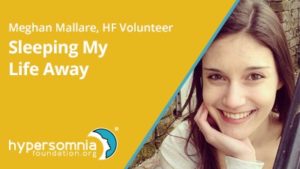 Meghan Mallare – “Sleeping My Life Away”
Meghan Mallare – “Sleeping My Life Away”
Meghan Mallare is 26 years old and from southwest Virginia. When she is not sleeping her life away, she works part time as a medical scribe and enjoys cooking and spending time with her puppy. In this video, Meghan describes the profound impact idiopathic hypersomnia has had on her life. She shares the long journey to diagnosis and the misconceptions surrounding this condition. She also describes the emotional, physical, social, and professional difficulties of being a young adult living with IH.
We appreciate donations from people like you who make these videos possible!
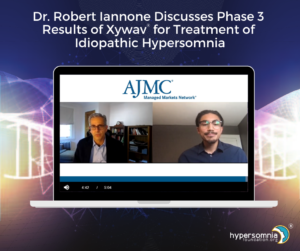 XYWAV® UPDATE FROM JAZZ PHARMACEUTICALS
XYWAV® UPDATE FROM JAZZ PHARMACEUTICALS
Robert Iannone, MD, MSCE, Executive Vice President of Research and Development at Jazz Pharmaceuticals, spoke with the American Journal of Managed Care® Life Sciences’ Medical World News and discussed the positive top-line results from the phase 3 study of Xywav® oral solution in adult patients with idiopathic hypersomnia.
In this 5-minute video interview, Dr. Iannone shared that the results from the study showed that patients improved in their daytime sleepiness symptoms. “There are currently no approved therapies in the United States for idiopathic hypersomnia. And so these results with Xywav are really, really encouraging,” said Dr. Iannone. “We’re working closely with the FDA to find the appropriate and fastest path to bring this new therapy to patients who desperately need it.”
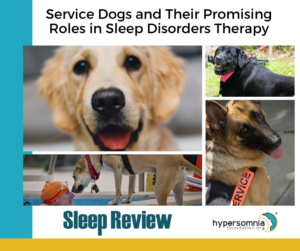 SERVICE DOGS AND THEIR PROMISING ROLE IN SLEEP DISORDERS THERAPY
SERVICE DOGS AND THEIR PROMISING ROLE IN SLEEP DISORDERS THERAPY
A recent online issue of Sleep Review magazine published an interesting article about service dogs and their promising roles in sleep disorders therapy. The article states that in patients with obstructive sleep apnea, nightmares, narcolepsy, parasomnias, and other sleep disorders, service animals may add a valuable, and currently underappreciated, treatment option.
There are agencies that have trained numerous narcolepsy service dogs to provide up to a 5-minute warning of an impending sleep attack so the patient can take precautions to minimize risk of injury during a fall. Dogs are also taught to place themselves in front of the patient to reduce the risk of falling onto a hard surface, to dial 911 from a specially designed phone, to fetch medication, and to cue patients to take medications to mitigate their disorder.
For additional information about service animals, read these articles on our website:
“Service and Therapy Animals – Part 1: Getting Started”
“A Service Dog Can Do That? Service Dogs – Different Types and What They Do”
If you have a service animal for your sleep disorder or have gone through the process of trying to obtain a service animal, let us know by sending us email at . We would love to share your story with others!
DID YOU KNOW? SHARE IH FACTS WITH FAMILY AND FRIENDS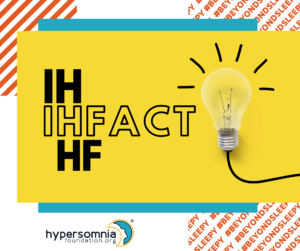
IHFact: The word “hypersomnia” is derived from “hyper” (too much) and “somnia” (sleep), i.e., it refers to the condition of sleeping excessive amounts. However, in current medical terminology, both “hypersomnia” and the related word “hypersomnolence” are used more broadly to indicate long sleep durations, excessive daytime sleepiness, or both. In some classification systems, “hypersomnia” is reserved to refer to specific disease entities, such as idiopathic hypersomnia and the related sleep disorders, while “hypersomnolence” refers to the symptoms of long sleep and/or excessive daytime sleepiness regardless of cause.
IHFact: Symptoms of IH often first appear in the mid-to-late teens or early twenties, although they can begin in childhood or at a later age. Symptom intensity often varies (between weeks, months, or years) and can worsen just prior to menses in women. Symptoms may spontaneously remit in 10-15% of patients.
It can sometimes be difficult explaining IH to family and friends. To increase awareness of and educate others about IH and help people better understand symptoms of this chronic neurological disorder, share our “CLASSIFICATION OF HYPERSOMNIAS” and the “ABOUT IDIOPATHIC HYPERSOMNIA” overview with family, friends, and medical professionals.
 SHOP AMAZON AND SUPPORT HF
SHOP AMAZON AND SUPPORT HF
Support the Hypersomnia Foundation every time you shop at on Amazon! Simply go to AmazonSmile and designate the Hypersomnia Foundation as your charity of choice and Amazon will send us a donation from every purchase you make! It’s free and easy to set up on your computer, smartphone or tablet!
